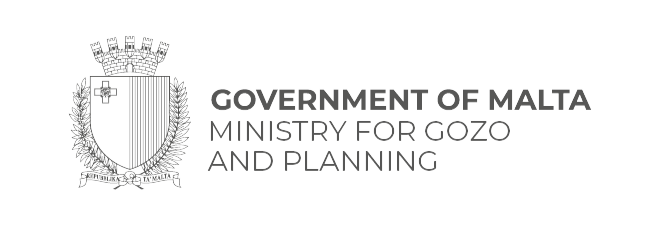Gozo is an island of diverse differing landscapes from lush rolling farm valleys to characterful coastal cliff paths. Our terrain and topography are dramatic and dense but never ever dull, with many opportunities for unique habitats. So, the flora and fauna can transform before your eyes as you journey even small distances on foot.
Whether you are exploring the beauty of Dwejra’s cherished Natura 2000 site or taking a scent-laden cliffside tromp through the untamed rugged beauty of Sanap Cliffs, there’s a wealth of beautiful nature just waiting to be discovered on our island. So, this week’s VisitGozo blog celebrates some of Gozo’s wonderful wildlife.
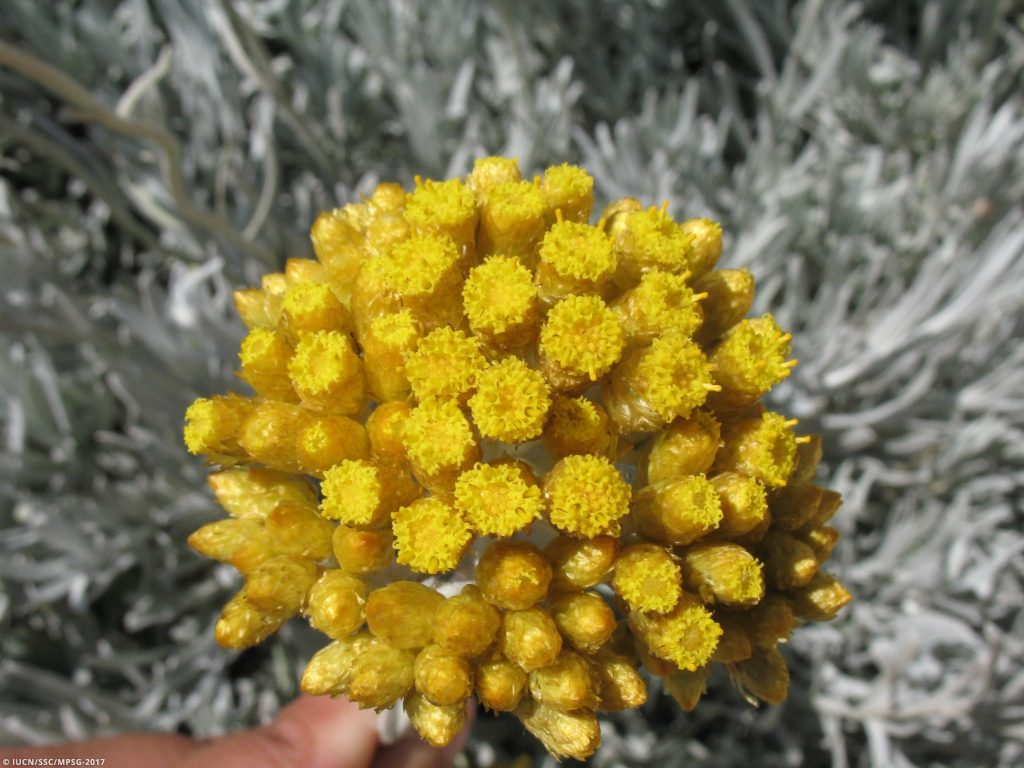
The Maltese Everlasting is a hardy plant unique to Gozo also called is-sempreviva ta’ Għawdex – (Helichrysum melitense).
Its silvery green foliage and dense inflorescence of bright yellow composite flowerheads bloom in late spring. This enduring ‘rupicolous shrub’ (meaning it grows on rocks) is found around the western cliffs of Gozo at Dwejra. It has an in-built defence system shielding it from our weather extremes as the fine silvery hairs on its foliage protect the leaves from high winds and our intense summer sun, helping them to retain water. This plant is related to the curry plant (Helichrysum italicum) and its yellow fruit gives off a curry-like scent if crushed. It’s easy to notice it once at Dwejra due to the dense population over there, please admire and appreciate but be mindful that it’s legally protected due to its rarity, so avoid picking our treasured flower to ensure our everlasting remains so.

Jeffrey Sciberras is an Environmental Educator working for Nature Trust Malta and is often out photographing Gozo’s diverse plant life. He says: “Gozo’s Mediterranean climate and vastly differing landscapes with boulder scree, rugged coast and plateau tops make it a fascinating location to witness wildlife. I remember as a teenager, when I began learning about endemic shrubs in Gozo like the Maltese Everlasting, The Maltese Stocks and the Gozo Hyoseris – the joy at finding these species was amazing; it was almost like being transported back in time, back to the pre-historic era when humans hadn’t even existed on our planet.”
If you are at Dwejra on the lookout for our Maltese Everlasting, you may also encounter our Chaste Tree, another scarce gem native to Gozo.
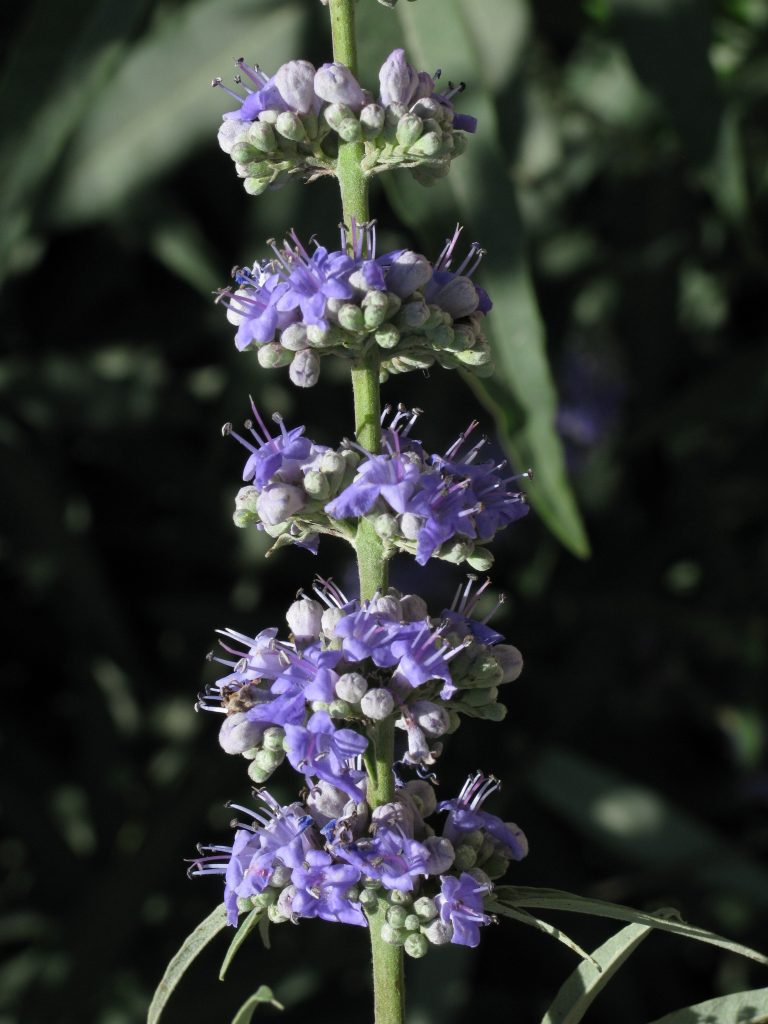
Throughout summer, the tree – which is more of a bush – produces beautiful, bluish-purple flowers and its black pepper-like seeds ripen over Autumn. The Maltese call it; siġra tal-virgi, għadiba and bżar tal-patrijiet. The latter is the Maltese translation of another English name, ‘Monk’s Pepper’ which alludes to the fact that in olden days people made potions from its seeds to reduce sexual desires – effectively making themselves more chaste. Some claim that during the Middle Ages the plant’s leaves and flowers were chewed by Monks to lessen any physical urges and so assist them in keeping their vow of celibacy.
https://www.instagram.com/p/BZStY1ZgWEF/
Our next natural wonder is a famous fungus (although it’s actually a parasitic flowering plant) also found in Dwejra. But sadly, you’ll have to take our word for it because its remote location and protected status make it unreachable. In fact, this plant was so revered for its alleged medicinal properties that Maltese Knights safeguarded it and prohibited Gozitans from accessing the small island where it grows. Nowadays this 60 metre high remote limestone rock where Cynomorium coccineum lives is known as Fungus Rock.
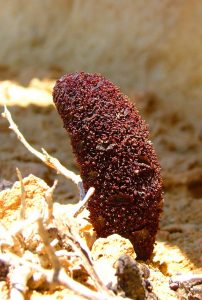
This Cynomorium coccineum species, also called Maltese fungus or Maltese mushroom has numerous other aliases worldwide such as the Desert Thumb, Red Thumb, Tarthuth (Bedouin) and Suoyang (Chinese). Throughout history it’s been used in medicines to treat various conditions; from anaemia to apoplexy, hypertention to dysentry. Its distinctive looking blackish-red infloresence burst up through the ground sprouting roots and shoots from its nodes. The plant grows on cliffs and salt marshes and because it has no green pigment cannot synthesise and so steals its nutrients from the roots of nearby plants.
Today, Fungus Rock site is a treasured nature reserve and living at ease on this remote exclusive island is another indigenous being, the Podarcis filfolensis subsp, Generalensis – a subspecies of our native Maltese Wall Lizard. This unique Generalensis lizard has a reddish belly and blue flanks. It owes its name to the Maltese term for Fungus Rock: il-Gebla tal-General, ‘General’s Rock’.
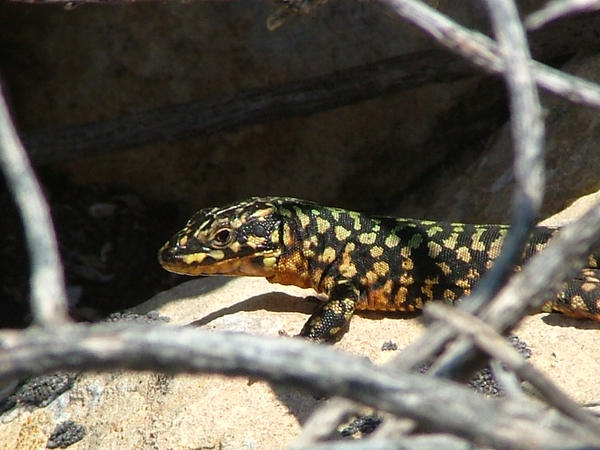
If you enjoy wildlife that’s cool, cold-blooded and scaly then read on, because our Maltese Wall Lizard also known as the Filfola Lizard is widespread in Gozo and easy to identify.
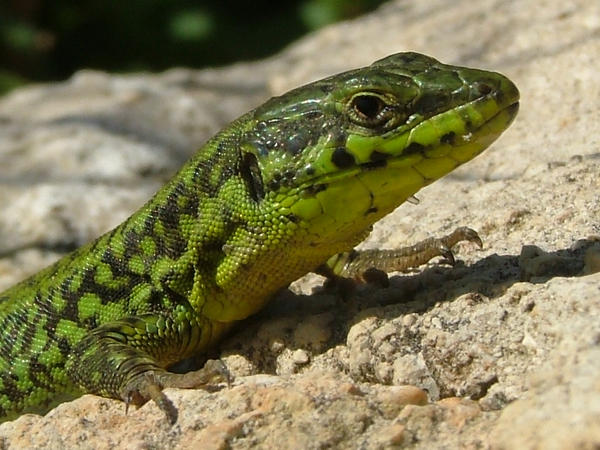
The Maltese Wall Lizard is endemic to Gozo and our Maltese islands and can also be found in the Italian islands of; Linosa and Lampione. In Gozo during the summer, you’ll see them darting in between rocks in walls or scurrying across pavements. They love basking in the sunshine and eat insects and vegetation. Their colour can range from a vivacious bright green to a deep rusty brown. The Maltese wall lizard is protected under Maltese and European law. It’s illegal to catch, keep or harm the species; although I’m not sure our next reptile read the small print – because they only rate these lizards as a tasty snack.
Did you know that Gozo has snakes? We do, and all of them are protected. The Western Whipsnake – Serp l-Iswed (Hierophis viridiflavus) is Gozo’s largest and it can grow up to a metre and a half.
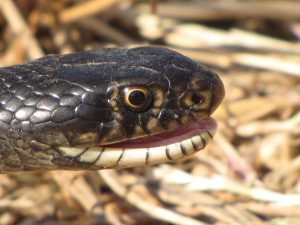
You are likely to find the Western Whipsnake sunning itself along rubble walls or on open rocky ground. This black snake, which as its name implies looks rather like a cowboy’s whip, is dark black with a lighter grey or yellowish colour on its underbelly. The snake is lively and will often climb trees whilst hunting for food. It eats lizards, mice, shrews and large insects. The western whipsnake has been protected throughout the Maltese islands since the early 1990’s.
(Photo for reference, may not have been taken in Gozo)
A smaller and very decorative snake also found in Gozo during the summer is the Leopard Snake (lifgħa). However, the Leopard snake craves the shade and lives amongst vegetation and gardens. You are likely to find these coiled underneath tree branches whilst foraging for food as they hunt during dawn and dusk. Botanist & Ecologist Stephen Mifsud works for EcoGozo where his job involves studying our wildlife and he witnessed this slithering beauty up close. He says: “My working week is often spent outside assessing wildlife across Gozo’s great outdoors and yet I discovered this beautiful snake by our staircase at home in Żebbuġ in late October 2013. The Leopard snake likes cool places and hibernates over the winter. They are fairly small and are often chased by cats, so I think it may have been frightened and was looking for a place to hide out. I rescued it of course – but couldn’t resist capturing a few photographs first.”
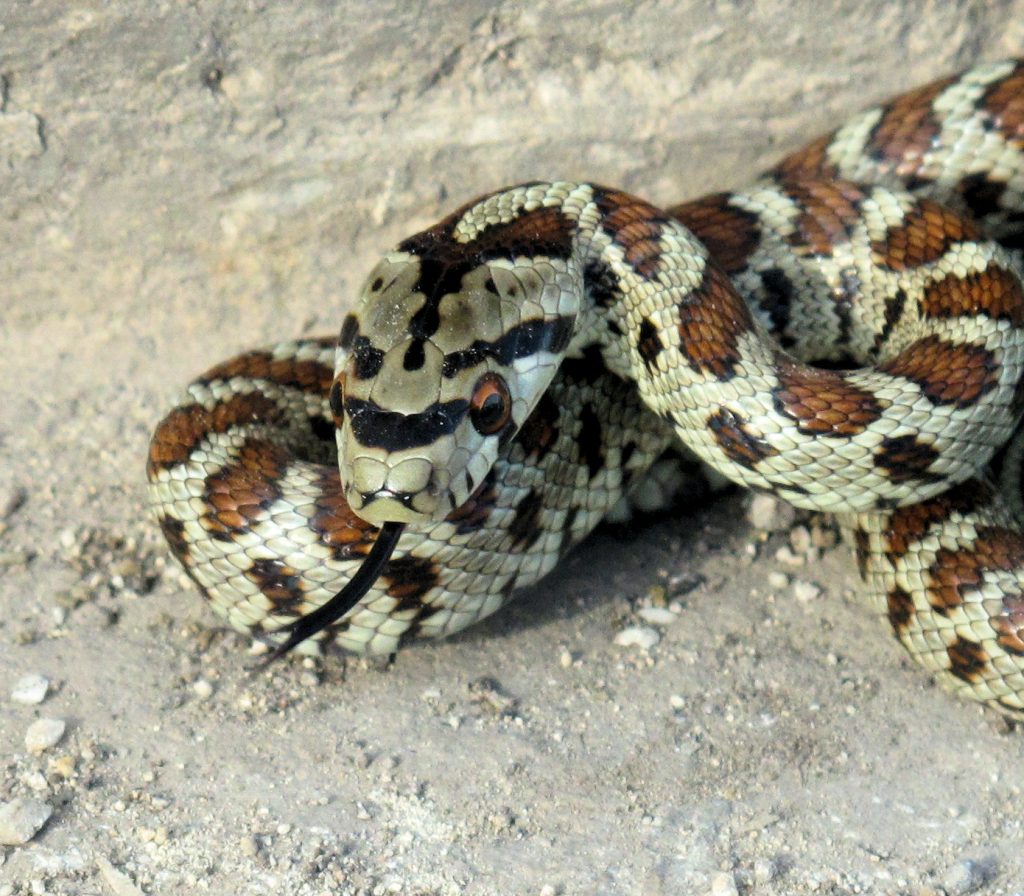
Now, you’d be forgiven for thinking our next species is an insect, because this beautiful and ingenious plant cleverly ‘mirrors’ the wasp it must attract to pollinate.

The mirror orchid is a resourceful insect orchid, which can be found at all over garigue and steppe habitats in Gozo such as Ta’ Ċenċ. It’s called dubbiena kaħla in Maltese and its most striking feature is its lip or labellum which comprises of three purposeful petals forming to create a metallic mauve centre, surrounded by a yellow border – with a ring of brown hair along the perimeter.
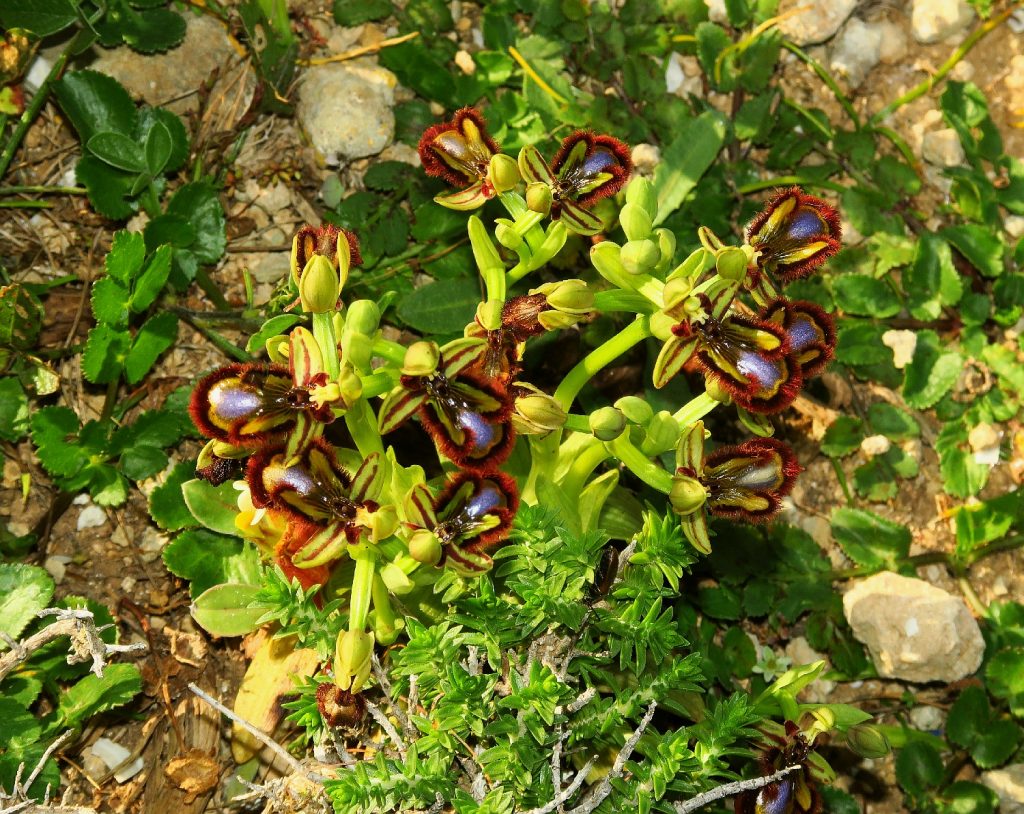
These unusual shapes and markings trick the male scoliid wasp into believing he’s found a willing female mate. The plant also gives off a chemical similar to the pheromone produced by the female wasp and this deception is so exacting that the male scoliid wasp lands on the flower and excitedly tries to mate with it. As this process begins, the wasps head or body touches the orchid’s pollen sac which breaks off attaching itself to the male wasp, where it remains until the wasp then moves onto another flower. Isn’t nature cunning and clever?
From deceit and deception to Shakespeare, soldiers and salvation. Let us conclude with the Sweet Briar Rose (Rosa rubiginosa), William Shakespeare’s personal favourite which was recently saved from extinction on our island by EcoGozo.
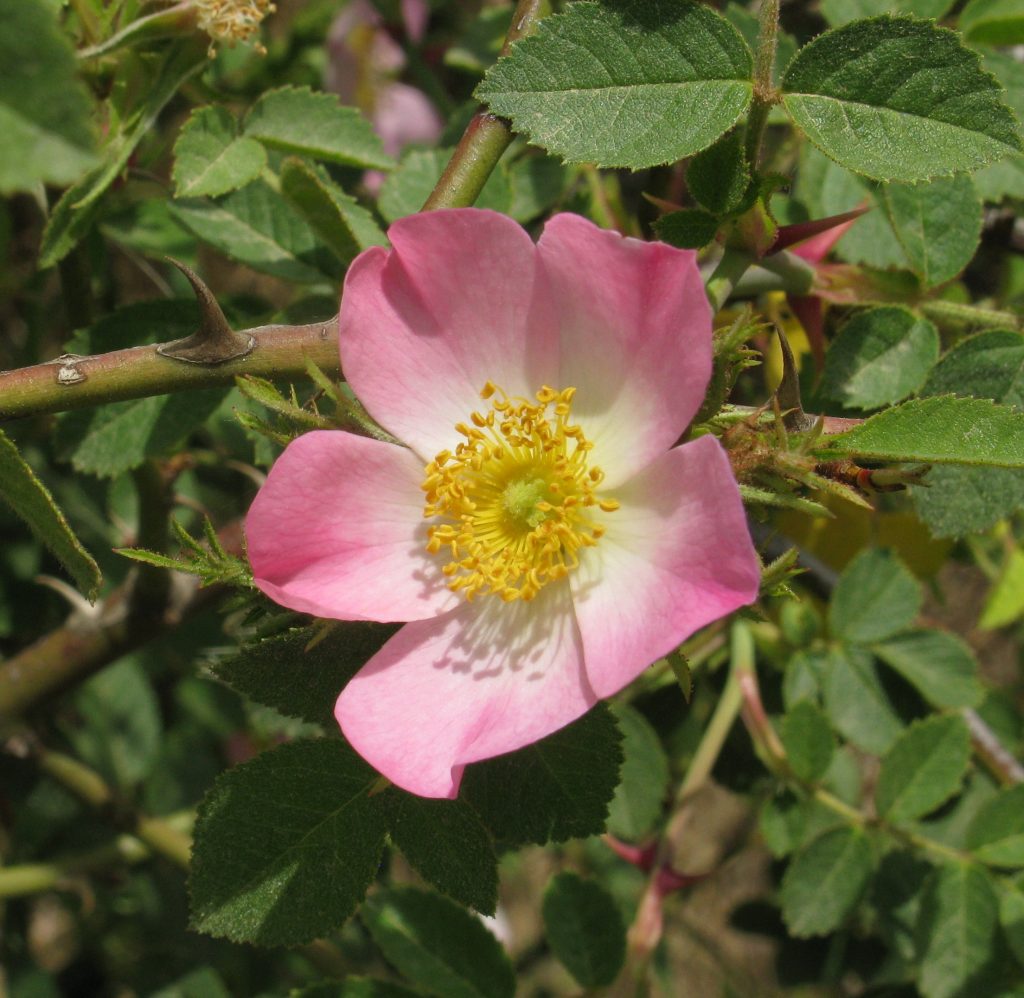
The rose’s fragrant pink blooms show in May, later in the year it forms colourful red inedible berries called ‘hips’ which are normally eaten by birds thereby dispersing the seeds. This wasn’t the case however in Gozo when Botanist and Ecologist Stephen Mifsud discovered a small isolated clump of this non-climbing shrub in the fertile valley of Wied il-Lunzjata between the rocky uplands of Kerċem and Fontana. He remembers it was in a sorry, vegetative state clinging on for dear life. He says: “No wonder it was Shakeseare’s favourite, it’s a beautiful rose characterised by its baby-pink, single flowers with a white centre, slender hooked thorns and pinnate leaves. It gives off a lovely delicate apple-like fragrance.”
Stephen continues: “Wied il-Lunzjata is the only valley in Gozo supplied by permanent freshwater springs. I presume this rose was a relic of old cultivation, or may even have been introduced to Gozo by British troops during the second world war as soldiers often drank tea made from rose hips to get their supply of Vitamin C. I carried out the steps necessary to salvage the shrub, protected it, fed it the nutrients to restore it back to health and it’s now flowering fully and growing successfully. We plan to propagate the shrub and introduce it to parks throughout the Maltese islands.”
To discover more about plantlife throughout the Maltese islands, check out Botanist Stephen Mifsud’s website:
If you’d like to explore Gozo’s coastal and countryside walks, more information can be found here:
Environmental Educator, Jeffrey Sciberras has a forthcoming nature walk/hike in Comino on Sunday 26th May where attendees can learn more about Comino’s flora and fauna. Click here for more information.
With thanks to: Mario Gauci, Jeffrey Sciberras and Stephen Mifsud.
READ NEXT: Can you recognise these wildflowers from Gozo?








